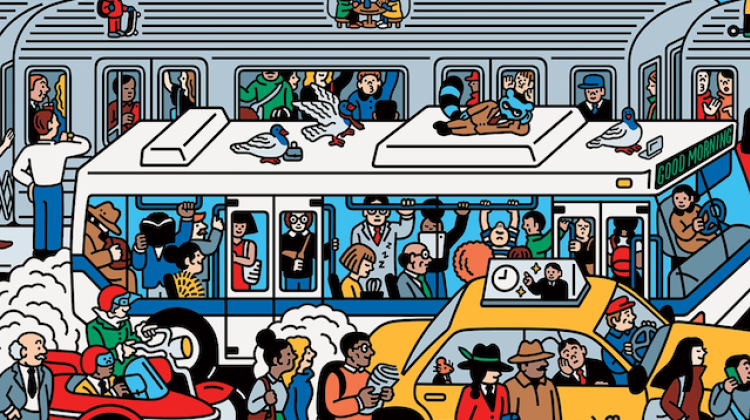The Evolution of Racialized Differences in Commuting

Credit: Tomi Um for the Atlantic's The Psychological Benefits of Commuting to Work
Envisioning commuting challenges for urban planners conjures images of stalled traffic along a major road within a city, where a stream of all urban residents share the costs of congestion caused by a reliance on single occupancy vehicles. But if you were to zoom in closer to examine the individual commuters, you may find this congestion has a racialized consequence.
In a paper for the Journal of Urban Economics, a team of researchers examined four decades of national commuting data to better understand how racialized differences in commuting evolved from the 1980s. By gaining clarity about the reasons behind changes, the team extrapolated how spatial and labor inequity is a potential explanation for differences between White and Black commuters.
“The time spent commuting is a material consequence of segregation, but it is not often studied directly,” said devin michelle bunten, Assistant Professor of Urban Economics and Housing and one of the authors of the paper. “By studying racialized differences in commute times, and relating them to distinct contextual factors, we hope to identify multiple fronts on which planners can work to mitigate this source of inequality.“
Findings in their paper, “The Problem Has Existed over Endless Years,” demonstrate that while the commute time difference between Black and White workers has decreased in most places, it has persisted in large, congested, segregated cities where Black commuters are still spending significantly more of their personal time commuting to work. This evolution in commuting reflects meaningful gains for many Black workers as well as durable barriers such as unequal job access, intense congestion, and distances between work and home.
In addition to bunten, authors of the paper include: Ellen Fu (Cornerstone Research), MIT alumna Lyndsey Rolheiser (PhD '17, York University), and Christopher Severen (Federal Reserve Bank of Philadelphia).


